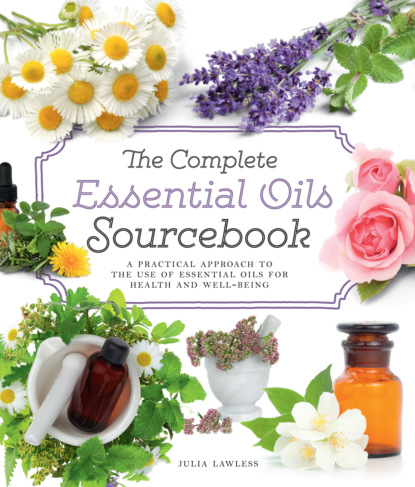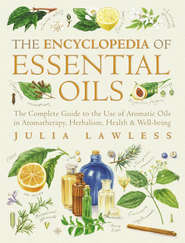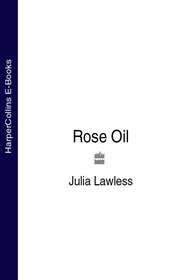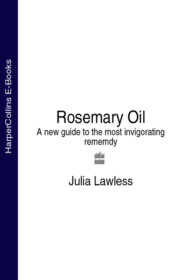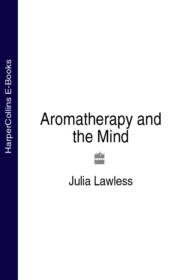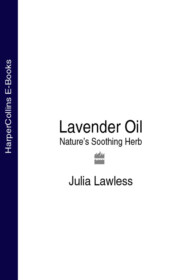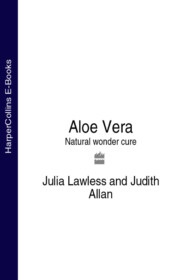По всем вопросам обращайтесь на: info@litportal.ru
(©) 2003-2024.
✖
The Complete Essential Oils Sourcebook: A Practical Approach to the Use of Essential Oils for Health and Well-Being
Настройки чтения
Размер шрифта
Высота строк
Поля
Face masks or packs have many benefits—they can nourish, rejuvenate, stimulate, cleanse, or soothe the skin, and generally improve its texture and quality. Masks can be made from a wide range of natural ingredients, including fruit pulp, oatmeal (for allergic and irritated skin conditions), egg yolk (for all skin types), yogurt, honey, and clay. Fruits such as avocado (for dry skin) or strawberry (for oily skin) are extremely nutritious. Powdered oatmeal is also very nourishing and gives the skin a smooth, silken appearance, and brewer’s yeast is good for all types of skin. Egg yolks are rich in lecithin, an invaluable skin aid. Natural yogurt contains lactic acid, which is good for large-pored, oily, and blemished skin and to balance combination skin. Honey is moisturizing and slightly antiseptic and can be incorporated into masks to soothe, soften, and nourish the skin—especially dry, sensitive, and mature complexions.
Clay is a useful ingredient for making masks, and is suitable for all but very dry skins. An aromatic clay mask is excellent for the treatment of acne and congested skin conditions, and can nourish dry or mature complexions and help to balance combination skin. However, those with dry, sensitive, or mature complexions should not use a clay-based mask more than once a week because they do have an overall drying effect. Masks are best applied after a bath or shower, when the pores are open and the skin is still warm and slightly damp.
Clay cleanses and draws out toxins. It also aids skin regeneration, stimulates the circulation, and soothes inflammation. There are many different kinds of clay available, but green clay is the most versatile, being rich in minerals and a good antiseptic. Fuller’s earth is also a good neutral clay base, which is more readily available.
Simple clay mask
To make a simple mask just add 2 to 3 drops of an essential oil to 2 tbsp/30ml of wet clay paste, and apply to the skin. Leave in place for 10 to 30 minutes while you relax. Rinse off with warm water.
Alternative clay mask
To make a more elaborate mask first mix 2oz/50g green clay powder with 2 tsp/10ml collodial oatmeal and keep in a jar. To make the mask, mix 1 tbsp/15ml of the basic mixture with 1 tbsp/15ml runny honey or plain live yogurt, one egg yolk, 2 to 3 drops of an essential oil suited to your skin type and enough water to give a smooth consistency. Apply to the skin and leave for 10 to 30 minutes—less for dry skin and longer for greasy/blemished skin. Rinse off with warm water. Finish by patting on a floral water.
FLORAL WATER
Flower waters and steams (#ulink_0cf498cc-7255-58e2-ab69-1c0ec1732dd8)
IT IS EASY to make flower (or floral) waters at home, and they are beneficial for all types of skin. Simply add 10 to 30 drops of essential oil (or a blend) to a 3½fl oz/100ml bottle of spring or distilled water, leave it to stand for up to a month, and then filter the liquid using a coffee filter paper. (A more basic preparation can be made without filtering, but this must be shaken before each use.) Even a few drops of essential oil will impart their scent to this amount of water, making it very lightly fragranced. These delicately scented waters can be used to freshen and hydrate the skin, either dabbed on with absorbent cotton or sprayed from a small plant spray. This can be helpful during pregnancy, when traveling by air, in hot, dry climates, or simply to help counter the drying effects of central heating.
A few drops of essential oil can be added to spring water for the simplest toilet water.
Toner/cleansers
Using a flower water as the base, add a little witch hazel, which increases the overall astringency for a greater toning action. For additional moisturizing and cleansing properties, add up to 25 percent of natural glycerine to the mixture. Flower waters that contain a proportion of witch hazel and glycerine will remove oily residues from the skin as well as acting as an astringent and antiseptic. If no make-up (or very light make-up) is worn, they can be used for simple one-step cleansing and toning.
Refreshing toilet waters
A variety of essential oils can be diluted in a minute proportion with alcohol, cider vinegar, or witch hazel to make toilet waters, eau-de-Cologne, or after-shave lotions. For example, a traditional toilet water called eau-de-Portugal can be made as follows:
Ingredients
20 drops sweet orange
5 drops bergamot
2 drops lemon
2 drops benzoin
1 drop geranium
1 tbsp/15ml of vodka
3½fl oz/100ml spring water
Method
Dissolve the oils in the vodka, then add to the water, shaking well. Leave the mixture to mature for a month at least, then filter and bottle.
ORANGE PEEL
LEMON LEAF
Facial treatment
Used once a week, steaming can help to hydrate the skin, cleanse the pores, and eliminate deep-seated grime and toxins. It is possible to buy a special facial sauna or steamer, but the same result can be achieved by simply filling a basin with boiling water, covering your head with a towel, and letting the steam work for five minutes on your face.
To make the steam treatment even more effective, add to the water 6 to 10 drops of an essential oil (or a blend) suited to your skin type. Soaking in a steaming hot bathtub containing a few drops of aromatic oil can also help clear skin congestion.
After steaming, the skin should be cooled and balanced with a flower water to close the pores. This should be allowed to dry naturally. When the skin is completely dry, a light moisturizer should be applied.
WARNING
Avoid steam treatments if your skin is prone to thread veins. This type of skin reacts adversely to extremes of heat and cold and should be treated gently at all times.
Eau-de-Cologne and toilet waters should be decanted into decorative glass bottles and kept well stoppered.
Chamomile water soothes the skin.
Spray the face with fragrant flower waters to hydrate and freshen the skin.
Rose oil is one of the best skin treatments.
Toiletries and treatments (#ulink_7f4def36-144e-5a33-b71d-a3da03087bf5)
Face scrub or exfoliant
To remove dead cells from the surface of the skin and stimulate the circulation, moisten a little medium-ground oatmeal (or colloidal oatmeal—available from pharmacists) in the palm of your hand using a suitable aromatic flower water (#ulink_a25446cd-e9c1-5c4b-9152-f55eb4fcec7a), and rub gently all over the face. For dry or sensitive skins, use ground almonds.
OATMEAL
Dry and wet body-brushing
Rub one or two drops of a chosen essential oil into a dry loofah or a natural-bristle brush to make it smell fragrant. Start by rubbing the feet firmly with the brush, then gradually work your way up the body, concentrating on any congested or fatty areas, such as the hips or thighs. Work up the arms, paying special attention to the backs of the upper arms, up the back from the waist, up over the abdomen, and down the front from the shoulders.
Popular in Scandinavia, this technique stimulates the circulation, helps break down fatty deposits, and brings a glow to the skin. Used in combination with other approaches, it is helpful for removing cellulite. For a milder effect, the same technique can also be used in the shower or bath, using a few drops of essential oil on a wet brush, loofah, or sponge.
A loofah or sponge can be used as a body brush, to give an invigorating tingle.
Body-brushing or an oatmeal scrub improves the circulation and acts as an exfoliant to remove dull-looking dead cells.
Aromatic scalp oil preparations
Local massage is very effective for conditions such as hair loss and brittle or dry hair, if it is carried out on a regular basis. Massage also stimulates scalp circulation and nourishes the deeper layers of the skin, bringing more nutrients to the follicles and improving the hair. To make a scalp massage oil, mix 8 tsp/40ml coconut oil and 2 tsp/10ml wheat germ oil with between 10 and 25 drops of essential oil depending on hair and skin type.
Hair conditioner
To make a good hair conditioner to encourage hair growth and improve the quality of the hair structure, mix 10 drops of essential oil with 5 tsp/25ml of slightly warmed jojoba oil, castor oil, or extra virgin olive oil, and rub this thoroughly into the scalp. Cover the hair with a layer of waxed paper, wrap in warm towels, and leave for an hour. Wash out, applying shampoo before the water; otherwise the hair will remain oily. Repeat weekly.
Другие электронные книги автора Julia Lawless
Rose Oil




 0
0





